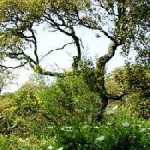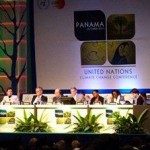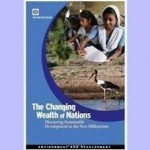
Washington, DC – A frog with no lungs, a “ninja” slug that fires love darts at its mate, and the world’s longest insect are among new species discovered in the past three years on the island of Borneo and featured in a World Wildlife Fund report released today.
The WWF report, ‘Borneo’s New World: Newly Discovered Species in the Heart of Borneo’, details 123 new species discovered since February 2007, when Borneo’s three governments – Brunei Darussalam, Indonesia and Malaysia – agreed to conserve 85,000 square miles of irreplaceable tropical rainforest, designated the Heart of Borneo.
“Three years of independent scientific discovery have unearthed a treasure trove of amazing species,” said Ginny Ng, WWF’s Senior Program Officer for Borneo and Sumatra. “This wealth of species, combined with the commitments of the governments, has given us a ray of hope for the Heart of Borneo.”
Highlights of the report include:
 the world’s largest stick insect – a 1.8 foot monster known as ‘Chan’s mega stick’;
the world’s largest stick insect – a 1.8 foot monster known as ‘Chan’s mega stick’;- the “ninja slug,” which makes use of so-called ‘love darts’ in courtship to inject a hormone into its mate that may increase its reproductive chances;
- a Bornean flat-headed frog that has been known about for a while but was just discovered to be the world’s first lung-less frog, breathing entirely through its skin;
- a flame-colored snake and a color-changing flying frog.
The Heart of Borneo, an “island within an island” is home to 10 species of primates, more than 350 birds, 150 reptiles and amphibians, and a staggering 10,000 plants that are found nowhere else on Earth, the report says. Explorers have been visiting Borneo for centuries, but vast tracts of its interior are yet to be biologically explored. The island’s wildlife and forests are under increasing threat from logging, conversion of forests for pulp, paper and palm oil, and illegal wildlife trade.
“The rate of discovery since the foundation of the Heart of Borneo is more than three new species per month, providing ample justification for the decision to protect the region,” Ng said. “But we need a continuous, concerted effort if these irreplaceable treasures are to be saved for future generations.”
To read the report, see photos of the species and hear a podcast, go to: http://www.worldwildlife.org/who/media/press/2010/WWFPresitem16011.html
Source:WWF, April 22, 2010












